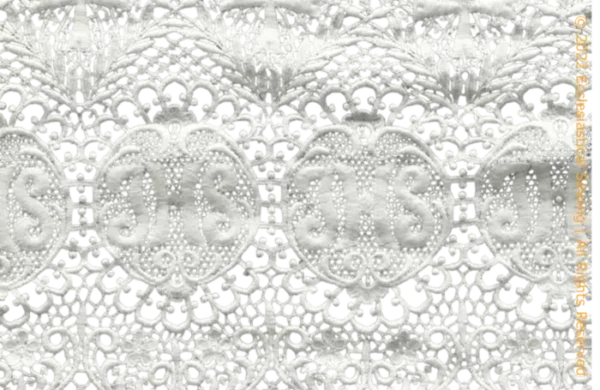
Lace for Church Use Instruction Book
The title is Lace for Church Use by Marie-Clare Downham.
Sewing is my passion. I took up needle and thread at the tender age of eight, and fell in love with the craft in my early teens. That craft blossomed as I continued my education, earning a Bachelor of Science Degree in Costume Design.
In my early college days, I was introduced to the art of vestment making. Working with needle and thread, fabric and trims to make beautiful vestment and inspire and encourage others to use their skills in service for the Lord's House is now my heart's desire.

The title is Lace for Church Use by Marie-Clare Downham.
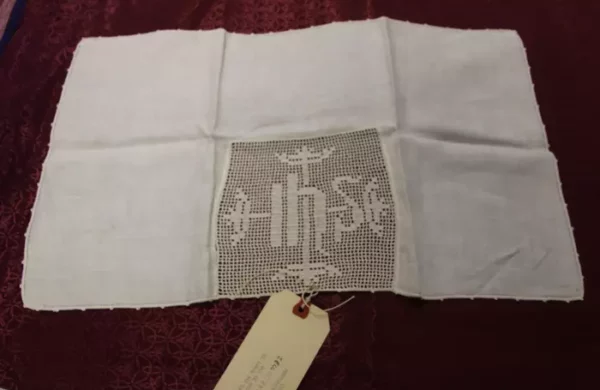
…types of lace used in the church…
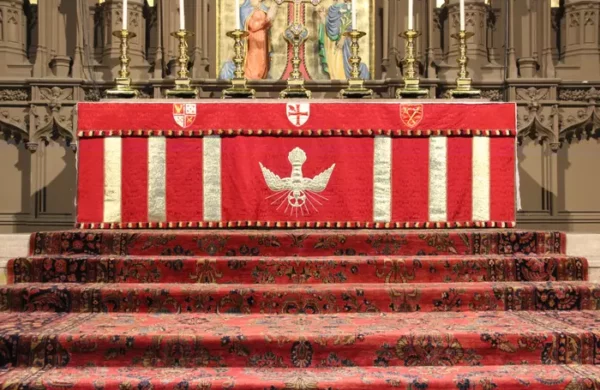
Features of Church architecture and Church Vestments awaiting our viewing pleasure.
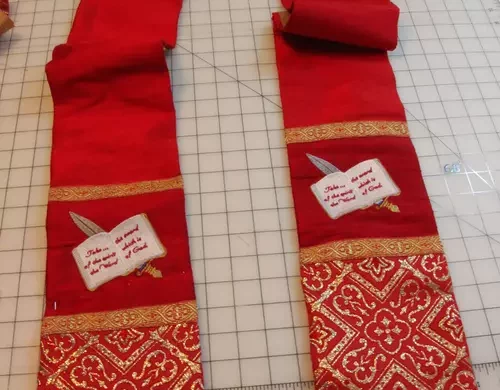
To easily buy the Red Dupioni Silk for the stole base, opt for pre-cut “stole quarters” tailored for a 4″³ pastoral stole or wider/longer lengths for V-back and other styles. A pastoral “stole quarter” is around 14”³ wide by 60”³ long. Similar to quilters buying “fat quarters” for minimal waste, this is a smart approach. Instead of a 60”³ length of 45”³ or 54”³ wide fabric, you purchase just enough for one stole. costs under $20.
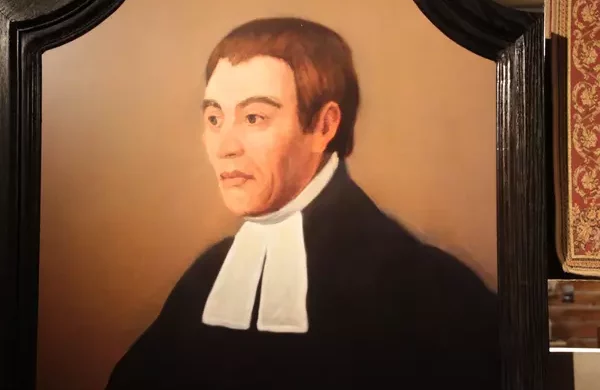
Clergy Collar made from linen 19th Century – a clergy collar with bands.
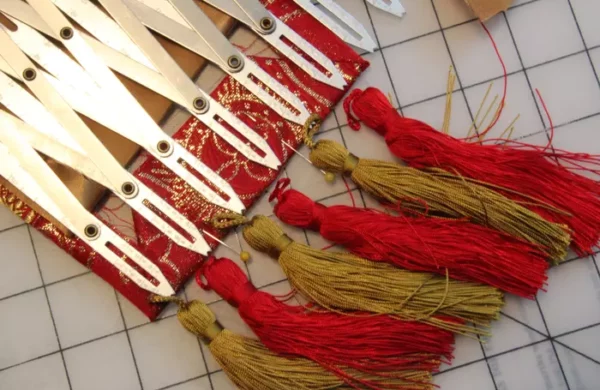
Tassels and fringe make excellent finishes for stole ends, but there are tricks for both. For tassels, use a button-hole marker to ensure even spacing. Decide on the number of tassels and the desired distance from each end, then mark and pin them in place. Tassels have a small cord or loop at the upper edge; attach it evenly. Tack the cord on the back of the stole, ensuring even hanging. In the photo, gold rayon blend tassels were initially used but later replaced with metallic gold tassels.
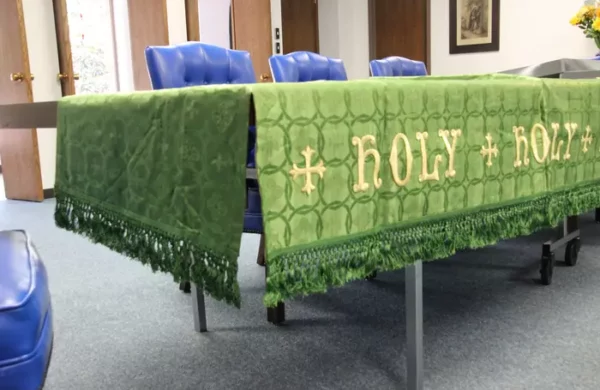
The Ecclesiastical Fabric has been used as the base fabric for the entire Superfrontal. The Superfrontal is designed so that it extends to the back edge of the altar with no overhang down the back side. This same style of superfrontal could be created using a cotton duck or dowlas fabric for the decking and using the Ecclesiastical Brocade on the front and end pieces.
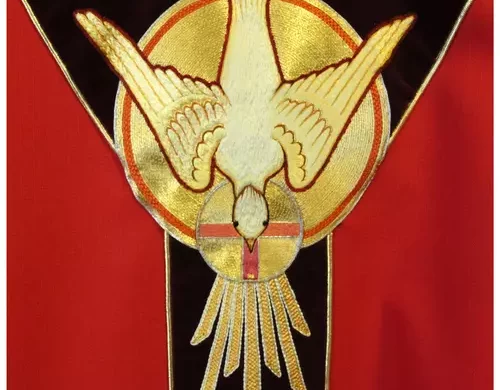
At O’Fallon Monastery, the Sisters created a special vestment collection, including this chasuble with a traditional Dove symbolizing the Holy Spirit on Pentecost. The design blends hand and machine embroidery, using silk and gold threads for a beautiful finish.
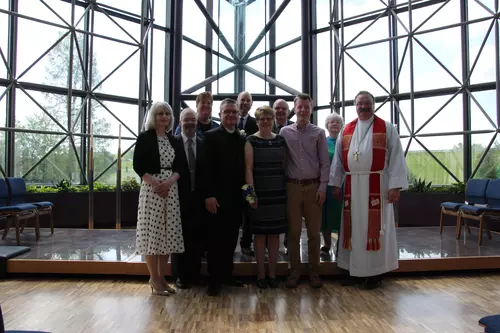
This stole is intended for use during an installation. The components consist of an applique of a Sword and a Bible. The machine embroidered applique and the lower orphrey were placed on a silk dupioni stole using a red and gold galloon trim to finish off the raw edges. While the red of the applique is a slightly darker color than the red of the stole, the gold trim bridges the color gap, and the colors blend together nicely, creating a subtle gradation.
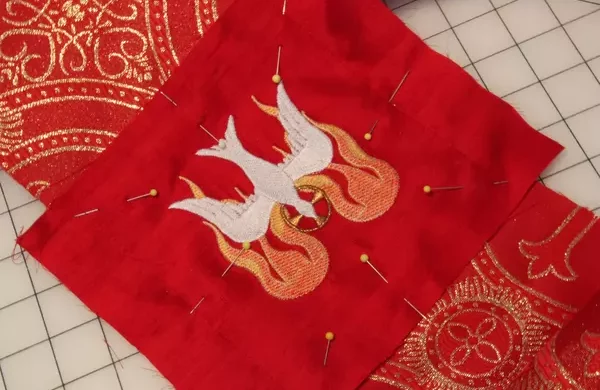
Pentecost Stoles. The first design features crossed keys symbolizing the Office of the Keys. The red silk dupioni, design with gold and bronze metallic threads, blends beautifully with red and gold brocatelle fabric and metallic galloon trim. The upper chest will showcase a descending dove with flames. and the final design will include a Bible and Sword of the Spirit, connecting to the Holy Spirit. These red Pentecost Stoles offer a reasonable budget.
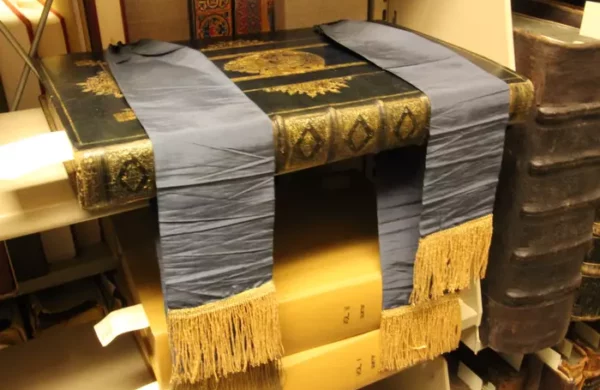
This Book of Prayer is a part of the Collection of Rare Books at the Concordia Seminary Library on the LC-MS Seminary Campus in St. Louis, MO. The Rare Books Library houses a unique collection of rare volumes relating to Church History, specifically, Lutheran Church History
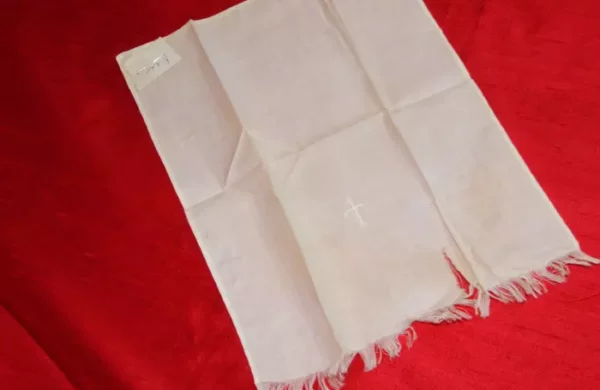
Baptismal Towels or Baptismal Napkins may be as simple or elaborate as one desires to make them. The size of this Baptismal Cloth is approximately 19″ x 21″ as the finished size. The embroidery may be a very simple hand-embroidered cross. The hems should be narrow. Now, there may be more specific instructions available in some older Church Vestment Books
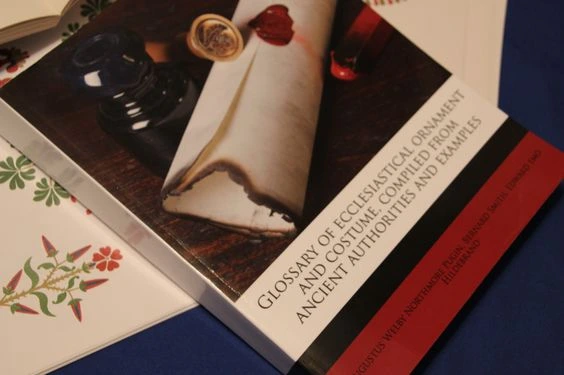
The books consist of a set of six titles published by the Embroiderer’s Guild back in the 1950s and 1960s and following. Each book in the series covers a set of topics such as Canvas Work, Vestments, and so on. The books are small but contain useful information. They are easy to use, as their size limits extraneous details.
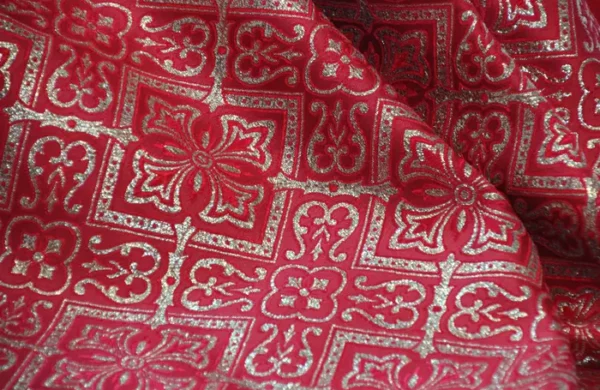
Red is the traditional color for use during the celebration of Pentecost, which comes fifty days after Easter, and 10 days after the Ascension of Christ.
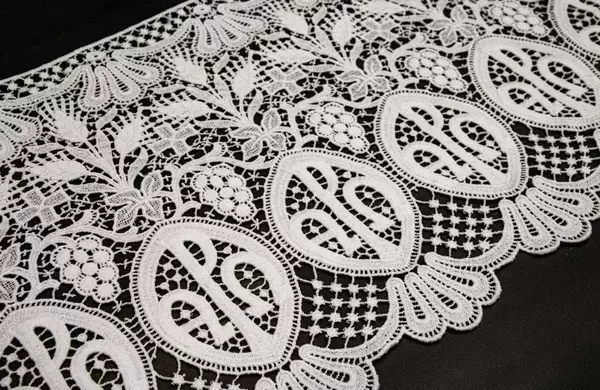
Lace, and variations is often applied to the hemline and sleeves of vestments such as a rochet which forms part of the choir robes. The lace can vary with styles of pattern, and materials, being sometimes a little heavier and bolder, to being something very light and airy.
You must be logged in to post a comment.